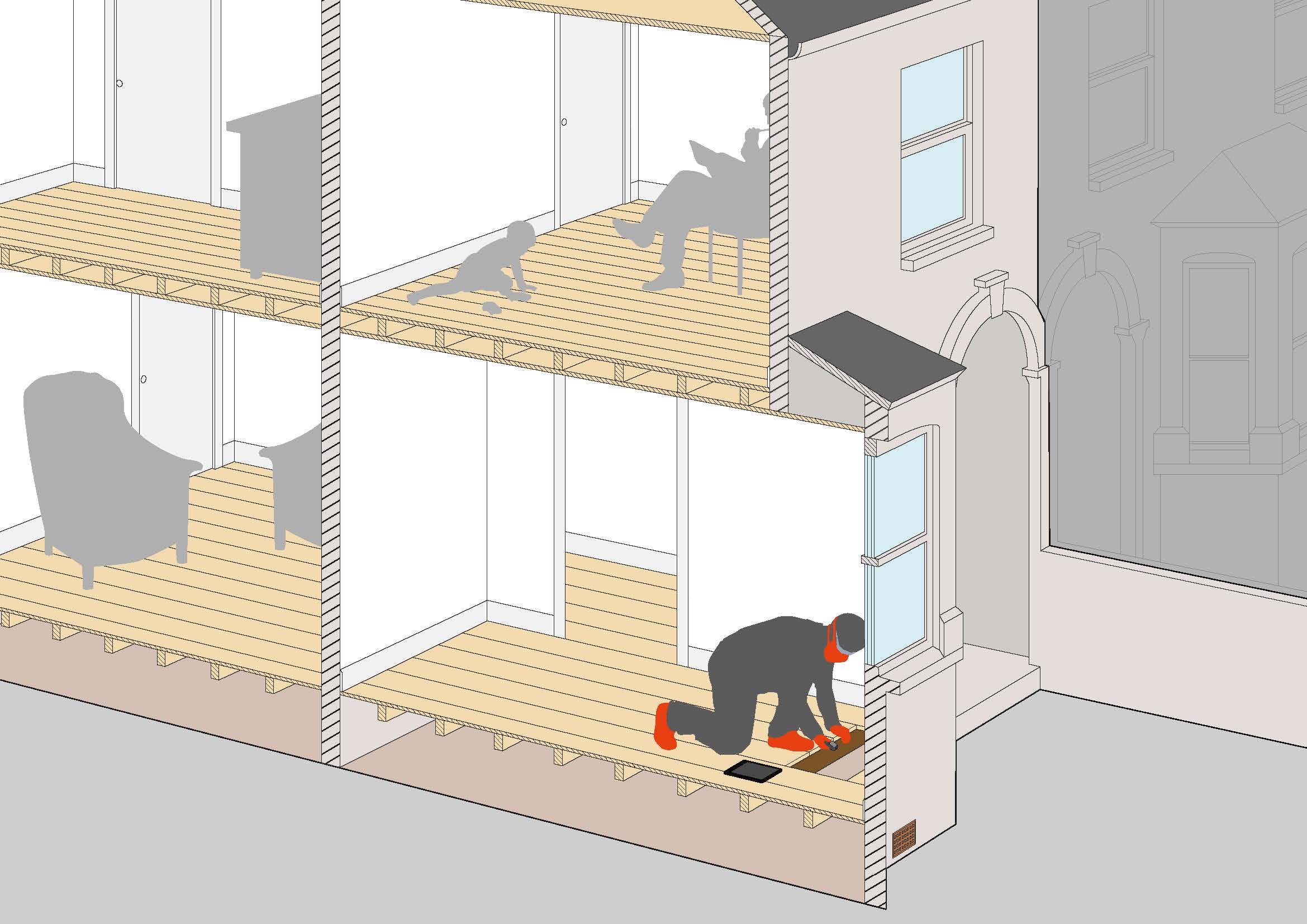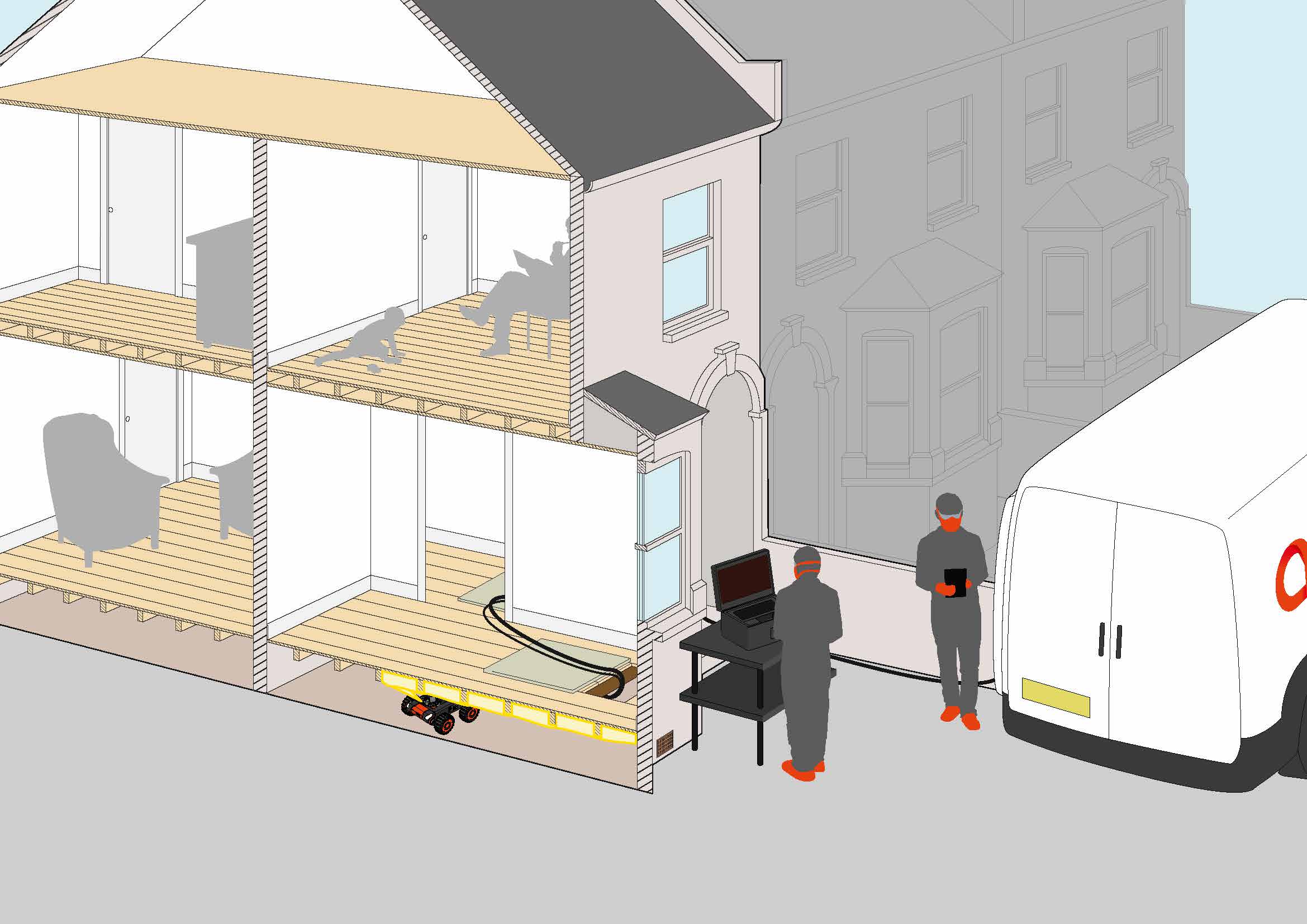‘Q-Bot Ready’ to safely install underfloor insulation in homes again
In this incredibly difficult time, Q-Bot’s top priority is the health and safety of the team, customers, suppliers and everyone we work with. Q-Bot continually monitors the situation to ensure that the Company’s response is in line with advice from the NHS, UK government and other relevant sources.
We have developed Q-Bot Ready as a framework to begin installing our robotic underfloor insulation in homes again. Health and Safety documentation has been reviewed and updated with respect to the ongoing coronavirus situation. These include revised and recalibrated documentation, plans, processes and training; an investment in new software, hardware, services and equipment; new and updated resident and staff communications to promote clarity, confirmation and reassurance. All documentation has been approved by a number of external Health and Safety consultants.
The Q-Bot position can best be described as balancing the overriding concern of keeping customers and staff safe, whilst allowing clients and homeowners to continue with important work to upgrade the energy efficiency of their homes. The UK has an ambitious climate change agenda and needs to upgrade properties to meet the UK’s carbon targets by 2050. Q-Bot has built “Q-Bot Ready” to address their challenges and meet these targets through innovation. Q-Bot Ready helps answer the question “when will be the right time, and what should I do first”. As a result, our housing and installation partners have recently begun work once again to install Q-Bot’s robotic underfloor insulation in both void properties and occupied homes. Click here to find out more about Q-Bot’s operation.
Since the beginning of March, Q-Bot Ready has offered additional coronavirus-related measures during the installation process to ensure Q-Bot operates in a safe manner to encourage a high level of confidence for customers. As a first step, Q-Bot helps identify anyone who is self-isolating or needs to be shielded [1].
Last but not least, Q-Bot maintains a safe distance from customers by locating the robotic work station outside the property under the protection of a temporary gazebo. This ensures that contact time with customers is and any risks are minimised throughout the installation and more importantly highlights the non-disruptive nature of Q-Bot’s solution. This will ensure communication clarity, candour and confidence across all stakeholders.
Revised Covid-19 Installation Process
Q-Bot phones customers to book a survey and will ask if anyone in the household has Covid-19 symptoms, is shielding or vulnerable. The team will also call ahead on the day of the survey to see if anything has changed.
In addition, checking-Bot checks with surveyors and installers to confirm they don’t have symptoms relevant to COVID-19, aren’t self-isolating, and haven’t been to high-risk areas.
|
Survey ~ 45 min Q-Bot’s surveyor will arrive at your home to check whether your property is suitable for underfloor insulation. They will follow the latest Government guidance, wear a mask and adhere to social distancing guidelines.
|
 |
|
|
Install ~ 1 to 2 days If your home is suitable for underfloor insulation, an appropriate time for the install will be agreed with you. Q-Bot’s installation team will access the floor void and insert the robot to spray insulation underneath the floor. Throughout the process the team will follow the latest Government guidance, wear masks and adhere to social distancing guidelines. |
Please note the surveyor and installation team will follow the latest guidance and:
- Wash or sanitise their hands before entering your home;
- Adhere to social distancing guidelines at all times. They’ll ask everyone in your home to do the same for them – ideally by staying in a different room;
- Wear a face mask;
- Wipe any surfaces they touch with anti-septic wipes.
Contact us to find out more about Q-Bot Ready or if you have any other queries.
[1] NHF English Housing Survey data 2018 to 2019

